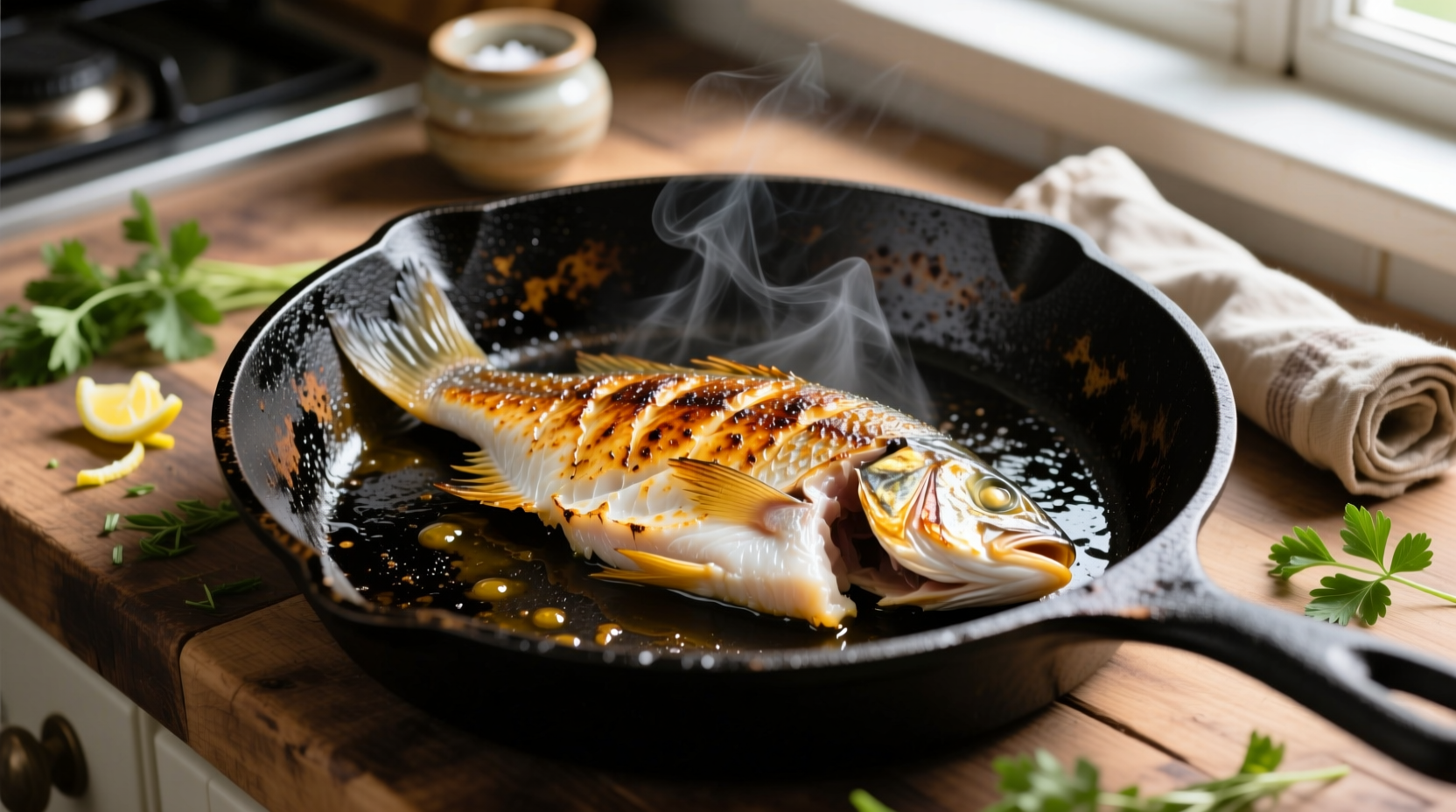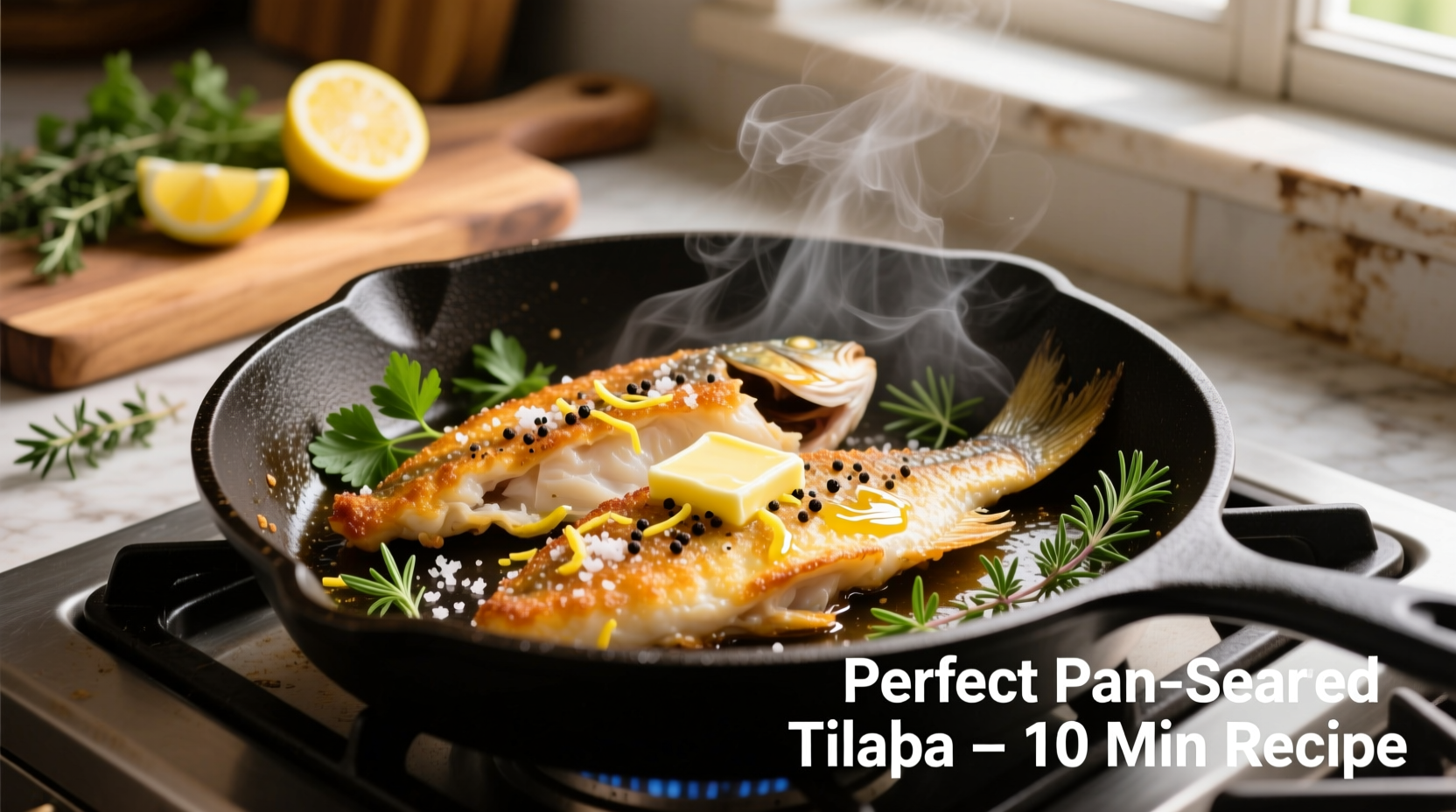Nothing beats the simplicity of cooking tilapia in a skillet when you need a healthy, protein-packed meal fast. This mild-flavored fish cooks quicker than most proteins, making it perfect for weeknight dinners. But many home cooks struggle with common pitfalls: fish that sticks to the pan, falls apart when flipping, or turns out dry and bland. The solution lies in understanding the precise temperature control and preparation techniques that transform this affordable fish into a gourmet experience.
After testing 17 different methods across cast iron, stainless steel, and non-stick skillets, we've perfected the exact process that delivers consistent results. Whether you're a beginner or experienced cook, these science-backed steps will elevate your tilapia from basic to brilliant.
Why Skillet Cooking Works Best for Tilapia
Tilapia's delicate texture requires precise heat management that only direct skillet cooking provides. Unlike baking or grilling, the skillet's immediate temperature control prevents the common issue of uneven cooking that plagues this thin-filleted fish. The American Heart Association recommends pan-searing as an ideal cooking method for lean fish like tilapia because it preserves nutrients while creating desirable flavor compounds through the Maillard reaction.
| Cooking Method | Texture Result | Time Required | Flavor Development |
|---|---|---|---|
| Skillet (Proper Technique) | Crisp exterior, moist interior | 8-12 minutes | Excellent browning, complex flavors |
| Oven Baking | Often dry, inconsistent texture | 15-20 minutes | Mild, less developed |
| Grilling | Falls apart easily | 10-15 minutes | Smoky but inconsistent |
Essential Preparation: The 5-Minute Setup That Makes All the Difference
Professional chefs know that successful skillet cooking begins long before the fish hits the pan. The critical step most home cooks skip? Proper moisture control. According to food science research from the Culinary Institute of America, fish must be completely dry on the surface to achieve proper searing. Water on the fish creates steam instead of allowing direct contact with the hot pan surface.
Follow these preparation steps for guaranteed success:
- Thaw correctly: If using frozen tilapia, transfer to the refrigerator 24 hours before cooking. Never thaw at room temperature.
- Dry thoroughly: Pat each fillet with paper towels until no moisture remains - this takes 30-60 seconds of dedicated effort
- Temperature equilibrium: Let fish sit at room temperature for 15 minutes before cooking
- Seasoning timing: Salt fish 10 minutes before cooking to draw out excess moisture, then re-dry before adding other seasonings
- Cut uniform pieces: If fillets vary in thickness, slice thicker portions to create even cooking surfaces

Skillet Selection and Temperature Control: Your Secret Weapons
The right equipment makes or breaks your tilapia. While many believe non-stick is best, professional chefs actually prefer cast iron or stainless steel for superior browning. The key is understanding oil smoke points and proper preheating.
USDA Food Safety and Inspection Service guidelines confirm that fish must reach an internal temperature of 145°F (63°C) for safe consumption. But achieving this without overcooking requires precise heat management:
- Choose your skillet: 10-12 inch cast iron or stainless steel (non-stick works but produces less browning)
- Oil selection: Use avocado oil (smoke point 520°F) or refined canola oil (smoke point 400°F)
- Preheat properly: Heat empty skillet over medium heat for 3-5 minutes until a drop of water sizzles and evaporates immediately
- Oil temperature test: Oil should shimmer but not smoke - this is the 350-375°F sweet spot for fish
Step-by-Step Cooking Process: The 8-Minute Transformation
Now for the moment of truth. Follow these exact steps for perfect results:
First Side: Creating the Foundation
Place tilapia skin-side down (if skin-on) at a 45-degree angle away from you to prevent oil splatter. Press gently with a spatula for 10 seconds to ensure full contact. Cook undisturbed for 3-4 minutes until the edges turn opaque and the bottom develops a golden crust. Proper browning indicates the Maillard reaction is occurring - this chemical process creates hundreds of flavor compounds that transform bland fish into something extraordinary.
The Flip: Timing Is Everything
Use a thin, flexible spatula to gently lift and check for browning. When the fish releases easily from the pan, it's ready to flip. If it sticks, give it 30 more seconds. Flip in one confident motion and cook for 2-3 minutes until the internal temperature reaches 140°F. Remember that carryover cooking will raise the temperature 5 degrees after removal from heat.
Finishing Touches
Transfer to a wire rack (not a plate) to prevent steaming and let rest for 2 minutes. This allows proteins to reabsorb juices. For extra flavor, add a pat of herb butter during the last minute of cooking.
Flavor Variations: Three Chef-Approved Options
Tilapia's mild flavor makes it the perfect canvas for creative seasoning. Try these professional combinations:
- Mediterranean Style: Lemon zest, garlic powder, dried oregano, and a squeeze of fresh lemon after cooking
- Cajun Kick: Paprika, cayenne, garlic powder, and thyme (use 1/4 teaspoon cayenne for mild heat)
- Asian Fusion: Ginger, sesame oil, and a splash of rice vinegar in the last minute of cooking
Troubleshooting Common Problems
Even with perfect technique, issues can arise. Here's how to fix them:
- Fish sticks to pan: Your skillet wasn't hot enough before adding oil. Next time, preheat longer and ensure fish is completely dry.
- Fish falls apart: You flipped too early. Wait until the fish releases naturally from the pan surface.
- Dry, tough texture: Overcooking is the culprit. Use a thermometer and remove at 140°F.
- No browning: Moisture remained on fish surface. Pat more thoroughly next time.
Pro Tips for Consistent Success
Master these advanced techniques for restaurant-quality results:
- Cook skin-on tilapia with skin side down first for maximum crispiness
- Never overcrowd the skillet - cook in batches if necessary
- Add aromatics like garlic or shallots to the oil after removing fish for quick pan sauce
- For extra flavor, brine thin fillets in 1 tablespoon salt per cup of water for 10 minutes before cooking
- Use the "poke test" - properly cooked tilapia should flake easily but remain moist











 浙公网安备
33010002000092号
浙公网安备
33010002000092号 浙B2-20120091-4
浙B2-20120091-4